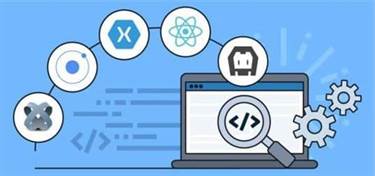The Cause & Effect, or fishbone diagram, was first used by Dr. Kaoru Ishikawa of the University of Tokyo in 1943. This diagram is used to determine all of the contributing root causes likely to be inflicting a drawback. This methodology can be utilized on any sort of drawback, and may be tailored by the user to fit the circumstances. 3/ We’ve then created a header section for the “Cause” & “Effect” (note we’ve increased the font measurement here to “29”. We’ve merged three cells for each header column.

The following image shows a time sequence X Granger-causing time series Y; The patterns in X are roughly repeated in Y after a while lag (two examples are indicated with arrows). It is a visual representation of the logical relationship between causes and results, expressible as a Boolean expression. These are represented as edges labeled with the constraint symbol utilizing a dashed line.
You might choose to brainstorm in advanced, placing the end results into the chart or maybe use the chart whereas your brainstorming, finishing it as you go along cause-effect graphing. It is also called Ishikawa diagram as it was invented by Kaoru Ishikawa or fish bone diagram because of the way it seems.
Black Box Techniques
Cause and impact can be used to know what actions/steps have been made that resulted in a constructive outcome. Once totally understood those actions may be duplicated into other related areas of the enterprise to capitalize on finest practice. The mask constraint states that if impact 1 is true then effect 2 is false. Note that the mask constraint relates to the effects and never the causes like the other constraints.
A tester needs to convert causes and results into logical statements after which design cause-effect graph. If function provides output (effect) based on the input (cause) so, it’s thought-about as defect free, and if not doing so, then it is despatched to the development group for the correction. Effect E1- Update made- The logic for the existence of effect E1 is «(C1 OR C2) AND C3». For logic AND C3 (Character in column 2 must be a digit), C3 must be true.
An “Effect” represents an output situation, a system transformation or a state resulting from a mixture of causes. As we explained in our introduction cause and effect is a tool that’s often utilized in problem-solving and problem-solving is all about understanding the chain of occasions that has resulted in a particular end result. Having a standardized tool to do this provides a methodical method that can circulate out to the group and used as a half of a problem-solving toolkit. 5/ We’ve then created an “effect” box by merging 5 cells deep 3 broad on the finish of the “tree” and then added borders round it. 3/ Create the causes boxes – these are simply two cells collectively to kind a field (with borders added) in excel spaced out to satisfy the necessities of the “tree style” shape. In this example, we’ve just received a Name & Date (you could broaden yours as required).
An XML-based commonplace on top of GraphML representing a cause–effect graph is proposed and is used as the enter sort to the approach. An empirical research is performed by a case research on 5 totally different methods with numerous requirements, together with the benchmark set from the TCAS-II system. Our results show that the proposed XML-based cause–effect graph mannequin can be used to symbolize system necessities.
- The decision table can additionally be used to arrange and doc the check circumstances and outcomes, making it a great tool for each the testing and development groups.
- Whilst many trigger and effect tools usualy utilize only a single effect it’s price contemplating how a single effect can usually lead into a mess of others and whether or not or not they relate to a specific cycle.
- Usually the graph exhibits the nodes representing the causes on the left side and the nodes representing the effects on the best facet.
- Note that the masks constraint relates to the effects and never the causes like the opposite constraints.
- You can also use trigger and effect tools to brainstorm and decipher constructive results.
- One essential distinction is to what extent the hyperlinks are meant to encode causation or (somebody’s) belief about causation.
It’s a generally used software and is widespread in problem-solving tools like 8d. A not-for-profit organization, IEEE is the world’s largest technical professional group devoted to advancing expertise for the advantage of humanity.© Copyright 2024 IEEE – All rights reserved. We provide free technical articles and tutorials that can assist you to to get up to date in trade. In this example we’ve solely used 3 results per group – you would extend that to many more if required. 5/ We’ve then used the “insert-shape” device to insert an arrow to the quick right of the cause field. Mapping out causes is normally accomplished in order a part of a team-based activity, i.e. brainstorming.
For instance, use a scatter plot or cause-and-effect flowchart if you want to show a causal relationship (i.e. one which you realize exists) to a basic audience. But if you want to graph more technical data, one other chart may be extra applicable. For instance, time-dependent knowledge that has a causal relationship to data in another time period could be demonstrated with Granger Causality time sequence. It is mostly uses for hardware testing but now adapted to software program testing, often exams exterior habits of a system. It is a testing technique that aids in choosing test cases that logically relate Causes (inputs) to Effects (outputs) to supply check cases.
Functional Testing – Trigger Impact Graphing
In different words, for the existence of effect E1 (Update made) anybody from C1 and C2 however the C3 should be true. We can see in graph cause C1 and C2 are connected through OR logic and effect E1 is linked with AND logic. Cause-Effect graph technique relies on a collection of requirements and used to discover out minimal possible take a look at circumstances which can cowl a maximum check space of the software. You can even use cause and effect tools to brainstorm and decipher positive results. For instance, you might need to understand how a project exceeded its expectations by delivering early and under price range.

Moreover, the proposed methodology can be used as a separate or complementary technique to other well-performing test input era strategies for masking particular fault varieties. In software program testing, a cause–effect graph is a directed graph that maps a set of causes to a set of results. The causes could also be regarded as the enter to the program, and the results may be regarded as the output. Usually the graph exhibits the nodes representing the causes on the left aspect and the nodes representing the results on the right facet. There may be intermediate nodes in between that combine inputs utilizing logical operators corresponding to AND and OR.
Notations Used In The Cause-effect Graph
We can see in the graph, C1 OR C2 is connected by way of NOT logic with impact E2. 2/ Create the highest row of “Group” boxes (note we’ve shaded these a separate color than the packing containers for use as causes). While the fishbone diagrams are extra generally used, all of those have some use depending on the circumstances. I am a fan of the 1 trigger to many results because it drives the user to contemplate the wider implications of the issues raised.
A decision table is a device that is commonly used at the side of the cause-effect graphing approach in practical testing. It is a tabular illustration of all potential inputs and outputs for a selected system or component https://www.globalcloudteam.com/, primarily based on the causes and results identified within the cause-effect graph. This method focuses on identifying and modelling the relationships between the inputs and outputs of a program, as well as the logical connections between them.
Software Program Testing Mcq
But since there could additionally be some crucial behaviour to be tested when some mixtures of enter circumstances are considered, that is why cause-effect graphing approach is used. Decision tables are helpful for figuring out any lacking mixtures of inputs and outputs, and for testing the system or element with a complete set of check cases. The determination desk may additionally be used to prepare and doc the test circumstances and results, making it a great tool for both the testing and growth groups. If your data reveals a trigger and impact relationship and also you need to convey that relationship to others, you could have an array of selections. Which particular graph you choose largely depends on what data you’re dealing with.
Whilst many trigger and effect instruments usualy utilize solely a single impact it’s price contemplating how a single impact can usually lead into a multitude of others and whether or not or not they relate to a selected cycle. As per example 3 above this instance creates a “tree” fashion diagram that groups causes collectively and flows them into a single impact. 6/ We’ve then simply Copied the two packing containers and the arrow after which pasted it beneath as many instances as we thought helpful. A trigger and effect chart offers a graphical representation of the relationship between causes and effects.
If the enter in column 2 is incorrect, i.e. input isn’t a digit, then message Y might be displayed. In the upcoming article I will cover the subsequent attention-grabbing test case design approach called as State transition testing method. A causal graph is a concise way to characterize assumptions of a causal model. Vertices present a system’s variable features and edges present direct causal relationships between features [4]. Effect E2 – Displays Massage X – The logic for the existence of impact E2 is «NOT C1 AND NOT C2» which means both C1 (Character in column 1 must be A) and C2 (Character in column 1 ought to be B) should be false. In different words, for the existence of effect E2 the character in column 1 should not be both A or B.
We will also talk about the benefits of utilizing this technique and supply examples of its software in functional testing. Cause Effect Graphing is a useful technique for practical testing that permits software developers to know the relationships between the inputs and outputs of a system or its element. This method provides a visible illustration of the logical relationships between causes and results, expressed as a Boolean expression. Cause Effect Graphing primarily based method is a technique during which a graph is used to symbolize the conditions of mixtures of enter circumstances. Cause-effect graphing approach is used as a outcome of boundary value evaluation and equivalence class partitioning strategies don’t contemplate the combinations of enter circumstances.
In other words, these graphs are excellent for showing relationships that you know exist, but not for proving one event that happening in a sure time frame brought on another. Cause-effect graph comes under the black box testing approach which underlines the relationship between a given end result and all of the components affecting the result. Cause-Effect Graph graphically exhibits the connection between a given outcome and all points that manipulate the outcome. It is also called Ishikawa diagram due to the way in which it looks, invented by Kaoru Ishikawa or fish bone diagram.
